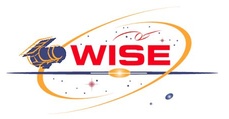

 |
Atlas Image derived source positions: co-adder comparisons |  |
This write-up expands on some of the details outlined in section II.3.g of the WISE All-Sky Explanatory Supplement. In brief, there are systematic differences between the equatorial (J2000) positions of sources determined off Atlas Images, e.g., via a flux-weighted centroid or peak-finding algorithm, and astrometrically calibrated positions from the WISE Source Catalog. These biases don't always exist, but when they do, their magnitude and direction vary with location on the sky and between bands. The biases are generally (and considerably) larger for W3 and W4 than for W1 and W2 (see plots). The 90th percentile upper limits in radial differences between image-derived source peaks and "true" astrometric positions are <~ 0.25″ in W1 and W2, and <~ 1.2″ in W3 and W4 (as determined from these plots).
The biases are also present in the single-exposure images but at a much lower level. Like the Atlas Images, they are also relatively larger for the W3 and W4 single-exposures. After testing and eliminating numerous hypotheses, one explanation remains. This is the presence of systematic errors in the distortion and/or astrometric calibration for the longer wavelength bands relative to W1 that get amplified by the distortion correction and reprojection routines in the co-adder. Evidence suggesting this is that first, the same astrometric biases are seen from at least three different image co-adders that recognize the "SIP-distortion" representation: AWAIC; Montage; and MOPEX (see Figure 1). This is independent of the interpolation method used. Second, the fact that the W1 Atlas Images exhibit negligible biases (from all co-adders; e.g., see plot) implies the W1 single-exposure distortion and astrometry is well calibrated and appropriately handled by all software. What's not yet understood is why the co-adding software amplifies the single-exposure biases for the long wavelength bands, becoming progressively worse in W2, W3, and W4. So, if the single-exposure inputs are "perfect" going in, the co-adder outputs are also.
Figure 1 below shows a section of an Atlas Image (ID 2741p348_ab41) showing an overlay of W1 (blue) with W3 (red) using four different image co-adders: AWAIC, Montage, MOPEX, and SWarp. ***Note: products from the SWarp software (Figure 1d) should not be included in this comparison since SWarp does not recognize the "SIP distortion" convention and hence the single-exposure inputs were not distortion corrected. The products therefrom exhibit (spatially varying) biases of their own. Figures 2 and 3 show the differences between astrometric (catalog) positions and image derived flux-weighted centroids for all W1 and W3 extractions from tile 2741p348_ab41 with S/N > 5, 7 < (w1mpro/mag) < 14, and 3 < (w3mpro/mag) < 11. Results are shown for centroids computed from co-adds made using AWAIC, Montage, and MOPEX.
Overall, co-add products from AWAIC, Montage, and
MOPEX show the same ~0.3″ misalignment
between W1 and W3 source centroids, with the W3 peaks
shifted to the left (Figure 1). The "true"
astrometric positions (green crosses, extracted from the Catalog)
are more in line with the W1 centroids. This provides
evidence that the problem lies in the single-exposure
distortion and/or astrometric calibration, most notably in
the long wavelength bands. As mentioned above, the W1 image-derived
positions agree very well with the WISE Catalog positions,
indicating there is no problem in how the co-adding software performs
its reprojection and distortion correction in general.
 |
 |
| Figure 1a - Atlas Image section overlay in W1 (blue), W3 (red) made using AWAIC, and positions from the WISE Source Catalog (green crosses). Click to enlarge. | Figure 1b - Atlas Image section overlay in W1 (blue), W3 (red) made using Montage, and positions from the WISE Source Catalog (green crosses). Click to enlarge. |
 |
 |
| Figure 1c - Atlas Image section overlay in W1 (blue), W3 (red) made using MOPEX, and positions from the WISE Source Catalog (green crosses). Click to enlarge. | Figure 1d - Atlas Image section overlay in W1 (blue), W3 (red) made using SWarp, and positions from the WISE Source Catalog (green crosses). Click to enlarge. *** See crucial note above regarding SWarp. |
 |
 |
 |
|
| Figure 2 - Astrometric (catalog) - flux-weighted source positions derived from W1 co-adds (on same footprint as tile 2741p348_ab41) made with AWAIC, Montage, and MOPEX (left to right). Dashed red lines are trimmed medians on each axis. Click to enlarge. | |||
 |
 |
 |
|
| Figure 3 - Astrometric (catalog) - flux-weighted source positions derived from W3 co-adds (on same footprint as tile 2741p348_ab41) made with AWAIC, Montage, and MOPEX (left to right). Dashed red lines are trimmed medians on each axis. Click to enlarge. | |||